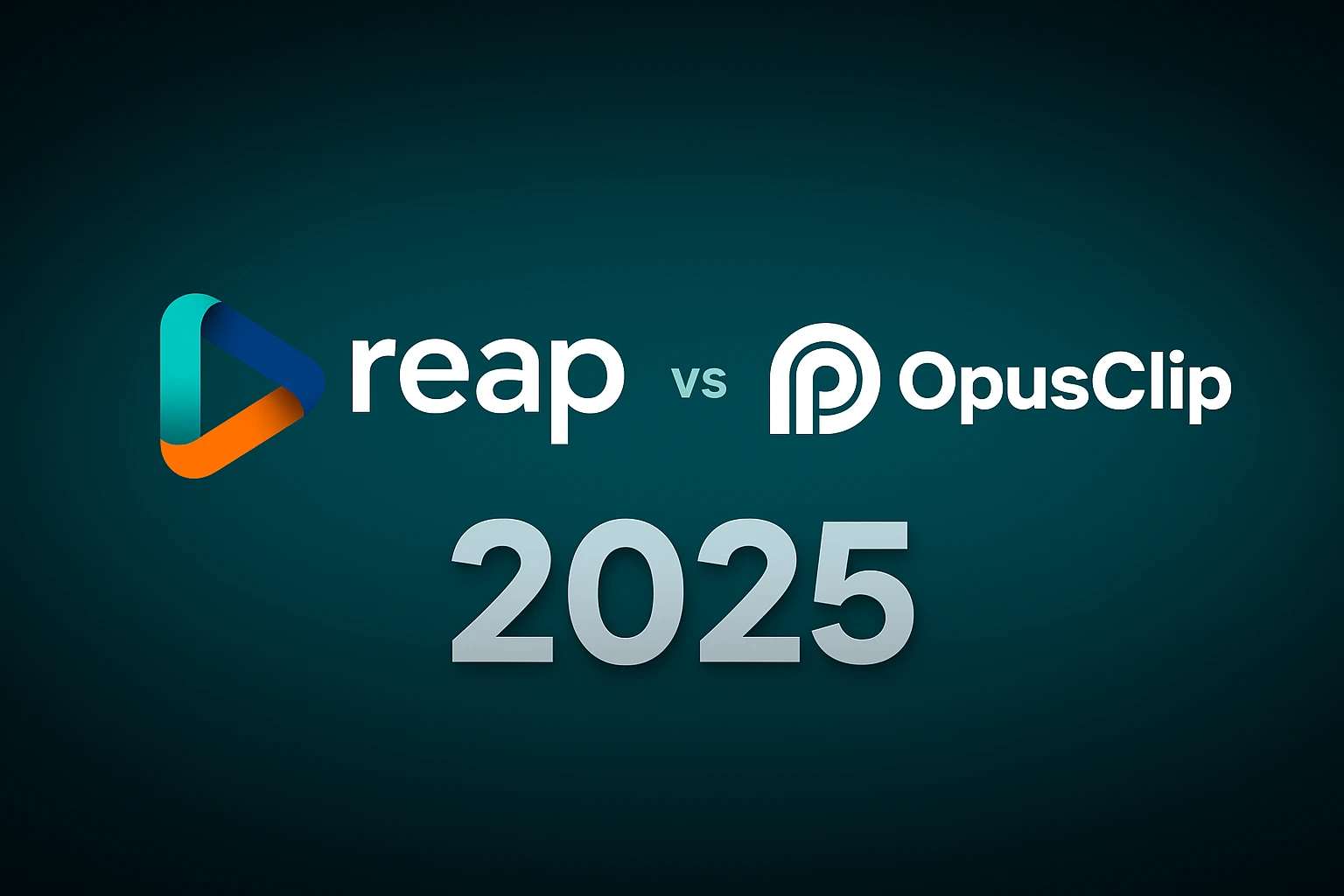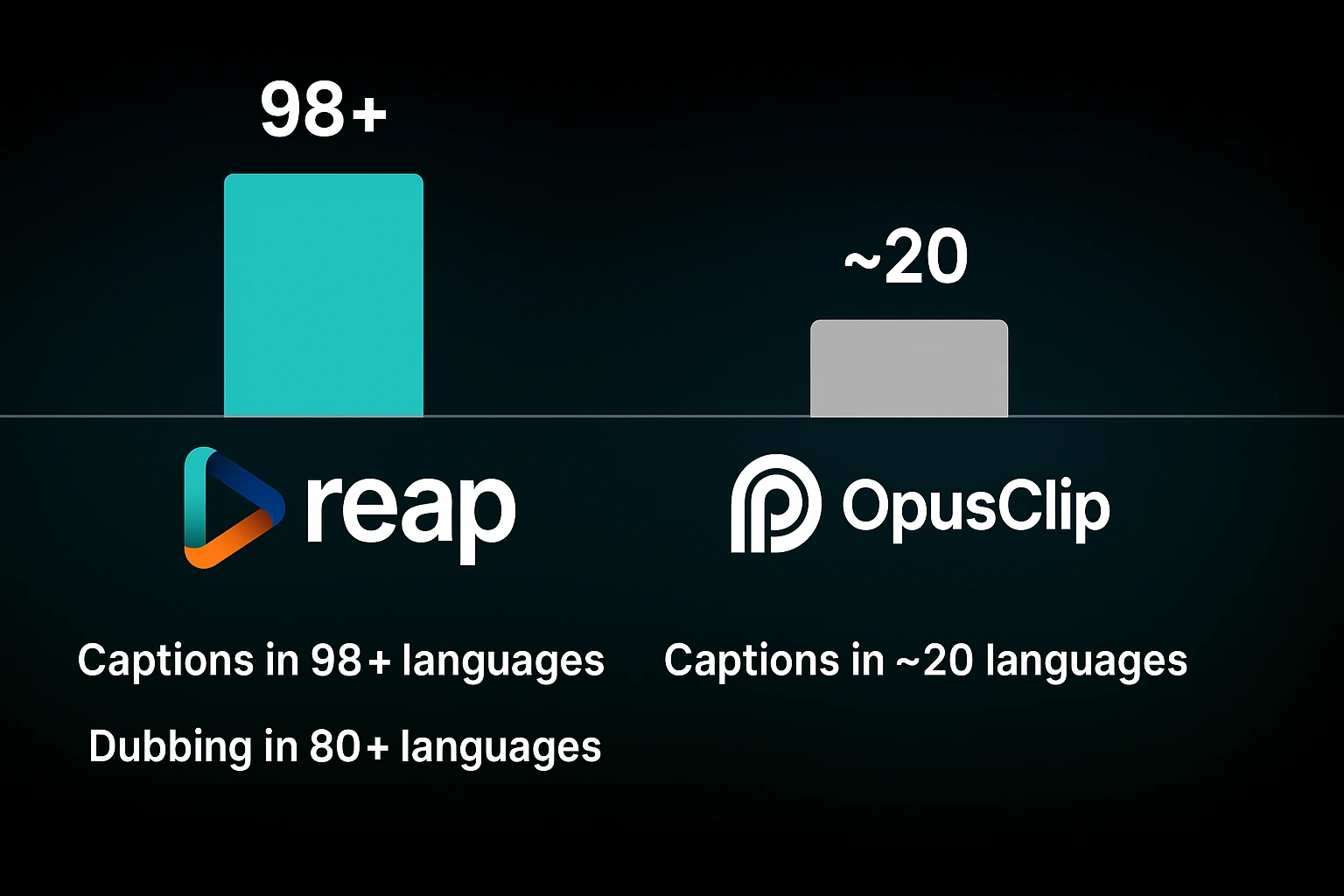Thank you! Your submission has been received!
Oops! Something went wrong while submitting the form.

In 2025, short-form content has become the backbone of digital communication. TikTok, YouTube Shorts, Instagram Reels, and LinkedIn video posts dominate engagement metrics. Creators, educators, and brands no longer ask if they should repurpose long-form content into clips they ask how fast and effectively it can be done.
That’s where AI video clipping tools come in. Instead of scrubbing through a 60-minute podcast or webinar manually, these platforms automatically detect the best highlights, add captions, reframe for each platform, and even schedule posts. Among the most talked-about tools are Reap (reap.video) and OpusClip (Opus Pro).
Both promise to turn long videos into viral-ready shorts, but how do they really stack up? In this comprehensive comparison, we’ll break down their strengths and differences across eight critical categories:
By the end, you’ll know which tool offers the most value, scalability, and global readiness for today’s creators.
A free trial is the first handshake between a platform and a creator. If it feels restrictive, adoption suffers.
This distinction influences the testing phase: creators can test Reap without artificial barriers.
Minutes are the real currency in AI video clipping tools. High-volume creators and agencies can burn through credits quickly.
This difference means Reap doubles the usable capacity for consistent creators.
The quality of clipping is where creators decide if they can trust the tool.
This affects the time saved metric. With Reap, clips are closer to publish-ready straight out of the box.
As audiences grow global, localization is non-negotiable.

Creators need to know not just what to clip but what will resonate.
Both approaches are same and good at the same time but data-driven creators may prefer Opus’s scoring.
A good clipping tool isn’t just about editing it’s about publishing workflows.
This impacts scaling. Agencies managing multiple brands benefit from Reap’s ability to generate all formats at once.
One of the biggest differentiators in 2025 is automation.
For enterprise-level automation or SaaS integration, Reap is unmatched.
So why do many creators still find Opus visually appealing?
Opus looks sleek and polished for solo creators, while Reap feels more robust and scalable for teams who need precision + automation.
Both Reap and OpusClip deliver tremendous value to creators in 2025.
For solo creators dipping into clipping, OpusClip may be appealing. But for creators, agencies, and teams who need a scalable, global-ready, automation-friendly solution, Reap is the clear choice in 2025.
Try Reap free or explore our API documentation for team workflows.
Does Reap watermark free-tier exports?
No. You get 60 minutes during a seven-day trial with no watermark.
Can OpusClip dub videos into other languages?
Not natively. You’d need a separate TTS service and manual sync.
Do both tools include a scheduler?
Yes, each offers a calendar that queues directly to YouTube Shorts, TikTok and Instagram Reels.
Which tool supports more caption languages?
Reap supports 98 + languages; OpusClip supports roughly 20.
What is the best alternative to Opus Clip?
Reap is the leading AI video repurposing tool and a top alternative to Opus Clip. It supports 98+ caption languages, AI dubbing in 80+ languages, automated reframing for multiple platforms, and an integrated scheduler for TikTok, YouTube Shorts, and Instagram, making it more powerful for global creators and agencies.
Reap is an AI video editor and repurposing tool that turns long videos into short, viral‑ready clips. It combines transcript‑based editing, highlight detection and auto reframing with styled captions in 98+ languages and AI dubbing in 80+ languages. Built for creators and teams, it replaces separate clipping, captioning, dubbing and scheduling apps, saving hours of manual work on TikTok, YouTube Shorts and Instagram.
Sam is the Product Manager at reap, and a master of turning ideas into reality. He’s a problem-solver, tech enthusiast, coffee aficionado, and a bit of a daydreamer. He thrives on discovering new perspectives through brainstorming, tinkering with gadgets, and late-night strategy sessions. Most of the time, you can find him either sipping an espresso in a cozy café or pacing around with a fresh brew in hand, plotting his next big move.
